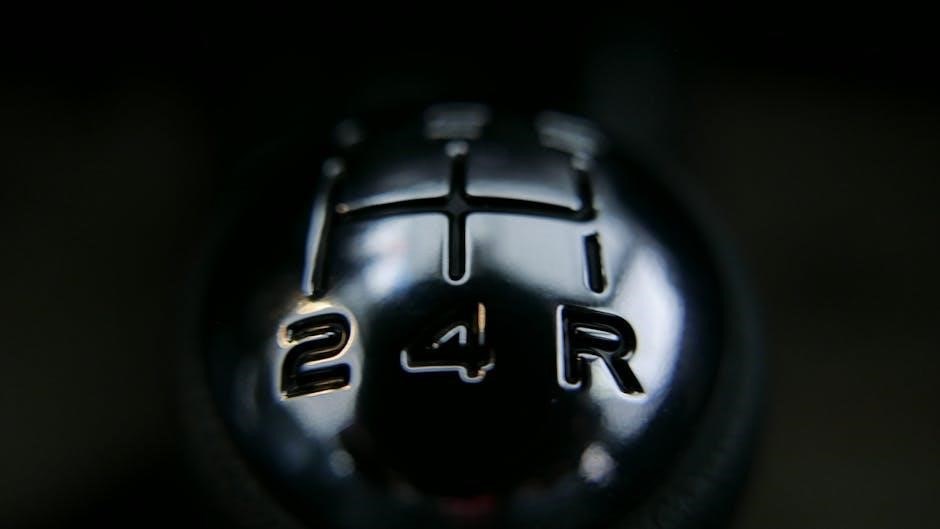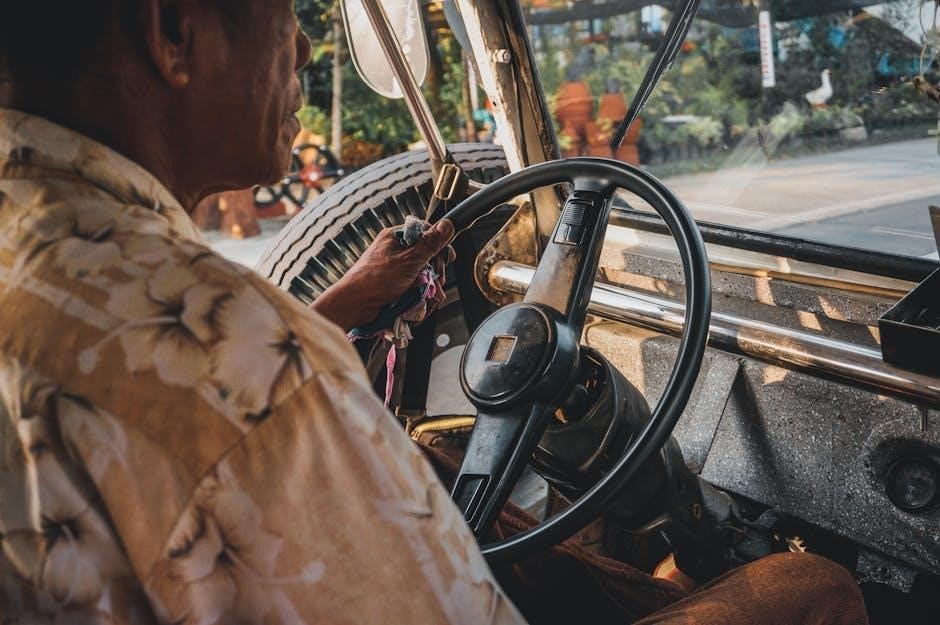driving classes for manual transmission
- Published
- in Canada
Driving Classes for Manual Transmission: A Comprehensive Guide
Embark on a journey to master manual transmission driving! Whether you’re a beginner or seeking to refine your skills, expert instructors offer personalized lessons. Learn clutch control, gear shifting, and defensive techniques. Discover schools with manual vehicles available for training, ensuring a comprehensive learning experience.
Why Learn to Drive a Manual Transmission?
Learning to drive a manual transmission vehicle, often called a stick shift, offers numerous advantages that extend beyond simply acquiring a new skill. Mastering the manual transmission unlocks a deeper understanding of vehicle mechanics, fostering a stronger connection between the driver and the car. This heightened awareness translates to improved control and responsiveness, enhancing the overall driving experience.
Beyond the enhanced control, driving a manual can be more engaging and enjoyable. The need to actively manage gear changes keeps the driver focused and involved, transforming mundane commutes into stimulating experiences. Furthermore, stick shift cars often provide better fuel efficiency compared to automatics, potentially saving money in the long run. In some regions, manual transmissions are still prevalent, particularly in older or specialized vehicles.
Knowing how to drive a stick shift can also be a valuable asset when renting cars abroad or driving vehicles in other countries. Moreover, possessing this skill broadens your employment opportunities, as some jobs require the ability to operate manual transmission vehicles. Ultimately, learning to drive a manual transmission is a rewarding endeavor that empowers drivers with greater control, understanding, and versatility behind the wheel.
Finding Manual Transmission Driving Schools and Instructors
Locating qualified manual transmission driving schools and instructors requires careful research and consideration. Begin by searching online for driving schools in your area that specifically offer stick shift lessons. Look for schools with experienced instructors who possess a patient and easy-going teaching style, ensuring a comfortable and effective learning environment. Check online reviews and testimonials to gauge the reputation and quality of instruction provided by different schools.
Consider whether the school provides its own manual transmission vehicles for lessons, as some schools require students to provide their own. If you don’t own a stick shift car, this is a crucial factor to consider. Inquire about the curriculum and teaching methods used by the school. A comprehensive program should cover essential skills such as clutch control, gear shifting techniques, hill starts, and parking.
Don’t hesitate to contact potential schools and instructors directly to discuss your specific needs and learning goals. Ask about their experience teaching beginners and whether they offer personalized lessons tailored to individual skill levels. Furthermore, inquire about the cost and duration of the lessons to ensure they align with your budget and schedule. By thoroughly researching and comparing different options, you can find the ideal manual transmission driving school or instructor to help you master this valuable skill.
Personalized Lessons and Training Programs
Personalized lessons and training programs are paramount for effective manual transmission instruction, catering to individual learning styles and paces. Specialist instructors tailor lessons to fit your specific needs, whether you’re a complete beginner or seeking to refine existing skills. A personalized approach allows instructors to focus on areas where you require the most assistance, ensuring a comprehensive understanding of manual transmission mechanics.
These programs often begin with an assessment of your current driving abilities, identifying strengths and weaknesses. Based on this evaluation, a customized curriculum is developed to address your unique learning objectives. This tailored approach ensures that you progress at a comfortable pace, mastering each skill before moving on to the next. Personalized lessons also allow for flexibility in scheduling and lesson duration, accommodating your busy lifestyle.
Instructors provide one-on-one guidance and feedback, addressing your specific questions and concerns. They utilize various teaching methods, including demonstrations, simulations, and real-world driving scenarios, to enhance your understanding and confidence. The goal is to equip you with the knowledge and skills necessary to operate a manual transmission vehicle safely and proficiently. Personalized training programs ultimately lead to a more efficient and enjoyable learning experience, maximizing your chances of success.
Availability of Manual Transmission Vehicles for Lessons
The availability of manual transmission vehicles is a critical factor when choosing driving classes. Many schools offer lessons, but not all provide the necessary vehicles, creating a significant hurdle for aspiring stick-shift drivers. Some schools require students to provide their own manual cars, which can be inconvenient or impossible for those without access to one. Therefore, it’s essential to confirm that the driving school offers well-maintained, manual-transmission vehicles specifically for lessons.
Schools that provide vehicles often maintain a fleet of cars specifically for training purposes. These vehicles are typically equipped with dual controls, allowing the instructor to intervene if necessary, ensuring student safety. The availability of these vehicles eliminates the need for you to purchase or borrow a manual car, making the learning process more accessible. Furthermore, using a school-provided vehicle ensures that you’re learning on a car that is properly maintained and suitable for training exercises.
Before enrolling in a manual transmission driving class, inquire about the availability of vehicles and any associated fees. Some schools may charge an additional fee for using their vehicles, while others include it in the overall lesson cost. Understanding the vehicle availability and associated costs is essential for making an informed decision and ensuring a smooth and effective learning experience.
Key Skills Taught in Manual Transmission Driving Classes
Manual transmission driving classes focus on imparting a range of essential skills that empower students to confidently operate a stick-shift vehicle. These skills encompass a deep understanding of the vehicle’s mechanics and the precise coordination required for smooth operation. Clutch control forms a cornerstone of these classes, teaching students to master the delicate balance between the clutch and accelerator for seamless starts and gear changes.
Proper gear shifting techniques are meticulously taught, emphasizing the correct timing and smooth transitions between gears to optimize performance and fuel efficiency. Students learn to recognize the optimal shift points based on engine speed and road conditions. Hill starts, often a daunting task for beginners, are addressed with specific techniques to prevent roll-back and ensure a confident ascent. Instructors guide students through the intricacies of using the handbrake and clutch to maintain control on inclines.
Parking a manual transmission vehicle, both on level ground and on hills, is another critical skill covered in these classes. Students learn to use the parking brake effectively and position the vehicle safely. Finally, defensive driving techniques specific to manual transmissions are incorporated, teaching students how to anticipate potential hazards and react accordingly, ensuring a safe and controlled driving experience in various traffic situations.
Clutch Control and Coordination
Mastering clutch control and coordination is paramount when learning to drive a manual transmission vehicle. These skills are fundamental for smooth starts, seamless gear changes, and preventing stalling. Manual transmission driving classes dedicate significant time to developing these essential abilities, providing students with the necessary techniques and practice to achieve proficiency.
The clutch is the key component that connects and disconnects the engine from the transmission, allowing for gear changes. Effective clutch control involves understanding the “friction point,” the position where the clutch starts to engage the engine. Finding and maintaining this point is crucial for smooth starts and preventing jerky movements. Students learn to gradually release the clutch while simultaneously applying the accelerator, coordinating their footwork to achieve a seamless transition.
Coordination between the clutch, accelerator, and gear shift is equally vital. Students practice smoothly shifting gears while maintaining momentum, minimizing any disruption to the vehicle’s speed. Instructors emphasize the importance of listening to the engine and feeling the vehicle’s response to determine the optimal timing for gear changes. Through repetition and expert guidance, students develop the muscle memory and coordination required to confidently operate a manual transmission vehicle in various driving conditions.
Proper Gear Shifting Techniques
Proper gear shifting techniques are at the heart of mastering manual transmission driving. Driving classes emphasize the importance of smooth, efficient gear changes to maintain optimal engine performance and fuel economy. Students are taught the correct procedures for upshifting and downshifting, ensuring they can confidently navigate various driving scenarios.
Upshifting involves moving to a higher gear as the vehicle’s speed increases. Instructors guide students on recognizing the appropriate RPM range for each gear, teaching them to listen to the engine and feel the vehicle’s response. The process involves smoothly depressing the clutch, shifting to the next higher gear, and gradually releasing the clutch while applying the accelerator.
Downshifting, on the other hand, involves moving to a lower gear to increase engine power or maintain control when slowing down. This technique is particularly useful when approaching hills or preparing to overtake another vehicle. Driving classes cover the importance of rev-matching, a technique that synchronizes the engine speed with the wheel speed before engaging the clutch. This ensures a smooth downshift and prevents jarring or loss of control. Through expert instruction and hands-on practice, students develop the skills necessary to shift gears efficiently and confidently in any driving situation.
Hill Starts and Inclines

Hill starts and inclines often pose a significant challenge for new manual transmission drivers. Driving classes address this challenge head-on, providing students with the techniques and confidence needed to master hill starts without rolling backward. Instructors emphasize the importance of coordinating the clutch, accelerator, and brake pedals to achieve a smooth and controlled start on an incline.
Students learn the “handbrake method,” which involves using the handbrake to hold the vehicle in place while coordinating the clutch and accelerator. This technique allows drivers to find the friction point of the clutch and apply the appropriate amount of throttle before releasing the handbrake. This prevents the car from rolling backward and ensures a smooth forward motion.
Another technique taught in driving classes is the “heel-toe” method, which involves using the heel of the right foot to blip the throttle while simultaneously braking with the toe. This technique is more advanced and is typically used in performance driving situations. However, understanding the concept can help drivers improve their overall coordination and control of the vehicle on inclines. Through patient instruction and repeated practice, students develop the muscle memory and confidence needed to confidently tackle hill starts in any manual transmission vehicle.
Parking a Manual Transmission Vehicle
Parking a manual transmission vehicle requires a specific set of skills and knowledge to ensure safety and prevent damage to the car. Driving classes cover various parking scenarios, including parallel parking, perpendicular parking, and angle parking, with a focus on the unique considerations for manual transmissions. Students learn the proper procedures for each type of parking maneuver, including how to use the clutch, gear selector, and brakes effectively.
One key aspect of parking a manual car is selecting the appropriate gear. On level ground, drivers are typically instructed to leave the car in first gear when parking facing uphill and in reverse when parking facing downhill. This provides an added layer of security, preventing the car from rolling if the parking brake fails. When parking on a hill, instructors emphasize the importance of turning the wheels towards the curb when facing downhill and away from the curb when facing uphill.
In addition to gear selection, students learn the importance of setting the parking brake firmly. They are also taught to check their surroundings carefully before and during the parking maneuver to avoid collisions with other vehicles or pedestrians. Through practical exercises and real-world scenarios, driving classes equip students with the skills and confidence needed to safely and effectively park a manual transmission vehicle in any situation.
Defensive Driving Techniques for Manual Transmissions

Defensive driving is crucial for all drivers, but it takes on added significance when operating a manual transmission vehicle. Manual transmission driving classes incorporate defensive driving techniques tailored to the unique challenges of controlling a stick shift. One essential technique is maintaining situational awareness, constantly scanning the road ahead, checking mirrors, and anticipating the actions of other drivers.
Another critical aspect of defensive driving in a manual car is smooth and controlled gear changes. Abrupt or jerky shifts can destabilize the vehicle, especially in adverse weather conditions or emergency situations. Instructors teach students how to anticipate gear changes based on traffic flow and road conditions, allowing them to maintain a safe following distance and avoid sudden braking.
Defensive driving courses also cover techniques for handling unexpected events, such as sudden stops, tire blowouts, or skidding. Students learn how to use the clutch and brakes effectively to regain control of the vehicle and avoid collisions. They are also taught to recognize potential hazards, such as distracted drivers or pedestrians, and take proactive steps to avoid them. By mastering these defensive driving techniques, manual transmission drivers can significantly reduce their risk of accidents and ensure a safer driving experience for themselves and others.
Benefits of Professional Instruction

Opting for professional instruction in manual transmission driving offers numerous advantages over self-teaching or learning from friends or family. Certified instructors provide structured lessons tailored to individual skill levels, ensuring a comprehensive understanding of clutch control, gear shifting, and other essential techniques. They offer a safe and controlled environment to practice, minimizing the risk of accidents or damage to the vehicle.

Professional instructors possess the knowledge and experience to identify and correct bad habits early on, preventing them from becoming ingrained. They can provide personalized feedback and guidance, addressing specific challenges and helping students progress at their own pace. Moreover, professional instruction often includes defensive driving techniques specific to manual transmissions, enhancing overall safety and awareness on the road.
Furthermore, many driving schools offer access to well-maintained manual transmission vehicles, eliminating the need for students to own or borrow a stick shift car for lessons. This can be particularly beneficial for those who are unsure whether they want to commit to owning a manual vehicle. In conclusion, professional instruction provides a structured, safe, and effective way to master manual transmission driving, equipping students with the skills and confidence to navigate the roads with ease.
Cost and Duration of Manual Transmission Driving Lessons
Locations Offering Manual Transmission Lessons
Finding locations offering manual transmission lessons requires some targeted research. Many driving schools, particularly those with a long history or specialized programs, still provide instruction on stick shift vehicles. Online searches using terms like “manual transmission driving lessons near me” or “stick shift driving school” can yield local options; Be sure to check the school’s website or contact them directly to confirm they offer manual transmission training and have suitable vehicles available.
Major metropolitan areas often have driving schools specializing in manual transmissions due to continued demand. For example, cities like Toronto, Los Angeles, and New York have academies dedicated to teaching stick shift. Look for schools that explicitly mention manual transmission training on their websites or marketing materials. Some driving schools may also offer lessons in surrounding suburban areas.
Consider expanding your search to include driving instructors who offer private lessons. These instructors may have their own manual transmission vehicles and can provide personalized training tailored to your needs. Review websites like Yelp or driving school directories for instructors specializing in manual transmissions; Remember to verify their credentials and experience before booking a lesson. Ultimately, with diligent research, you can find a convenient location to embark on your manual transmission driving journey.
